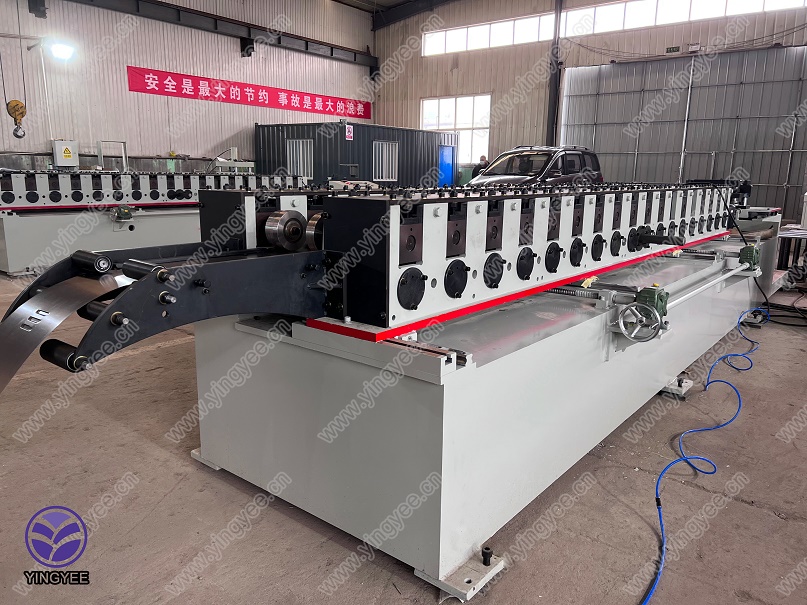
The Corrugated Sheet Roof Roll Forming Line An Overview
In the ever-evolving construction industry, the demand for durable and cost-effective building materials is on the rise. Among the various options available, corrugated sheet roofing has gained immense popularity due to its strength, durability, and versatility. A crucial aspect of producing these corrugated sheets is the roll forming line, a sophisticated system designed to enhance efficiency and precision in manufacturing.
Understanding Roll Forming
Roll forming is a manufacturing process that involves bending sheet metal into a desired shape through a series of rollers. This continuous process allows for the production of long sections of material, which can be easily cut to specified lengths. The advantages of roll forming include minimal waste, consistent quality, and the ability to produce complex geometries.
The Components of a Corrugated Sheet Roof Roll Forming Line
A typical roll forming line for corrugated sheets consists of several key components
1. Uncoiler The process begins with the uncoiler, which holds and feeds the raw metal coil into the line. This component is crucial as it ensures a steady supply of material for the rolling process.
2. Roll Forming Machine This is the heart of the operation. The roll forming machine comprises multiple sets of rollers that gradually shape the flat metal sheet into a corrugated profile. Each pass through the rollers changes the shape slightly until the final product emerges. The precise design of the rollers is essential for achieving the desired corrugation depth and spacing.
3. Cutting Unit Once the corrugated sheet has been formed, it is cut to the required length. Most modern roll forming lines incorporate a hydraulic or mechanical cutting unit that can operate in-line, allowing for continuous production without manual intervention.
4. Stacker After cutting, the sheets are stacked for easy handling and transportation. Automated stackers can efficiently collect and organize the sheets, minimizing manual labor and enhancing overall safety.

5. Control System A sophisticated control system is integral to the roll forming line, enabling operators to monitor and adjust settings in real-time. This system ensures that the production process runs smoothly and that any necessary adjustments can be made quickly to maintain quality.
Benefits of Using a Roll Forming Line
1. Efficiency The continuous nature of the roll forming process allows for high-volume production rates. Once set up, the line can operate with minimal downtime, thus optimizing production efficiency.
2. Cost-Effectiveness Although the initial investment in a roll forming line can be significant, the long-term savings achieved through reduced material waste and labor costs often outweigh the upfront expenses. Additionally, the durability of corrugated sheets results in lower maintenance costs over time.
3. Customization Roll forming lines can be designed to produce various profiles and gauges of corrugated sheets, catering to specific customer needs. This flexibility is particularly beneficial in markets that require tailored solutions.
4. Quality Control Advanced technology in roll forming lines ensures consistent product quality. With real-time monitoring and control systems, manufacturers can quickly detect and rectify any discrepancies in production.
Applications of Corrugated Sheet Roofing
Corrugated sheet roofing has a wide range of applications, from residential to industrial structures. It is commonly used in warehouses, agricultural buildings, and commercial facilities due to its ability to withstand harsh weather conditions. Moreover, the lightweight nature of corrugated sheets makes them easy to handle and install, further enhancing their popularity in the construction sector.
Conclusion
The corrugated sheet roof roll forming line represents a significant advancement in manufacturing technology within the construction industry. Its efficiency, cost-effectiveness, and ability to produce high-quality materials make it an indispensable tool for manufacturers. As the need for reliable and sustainable building materials continues to grow, the roll forming line is poised to play a vital role in meeting these demands, paving the way for innovative construction solutions that contribute to a more sustainable future.